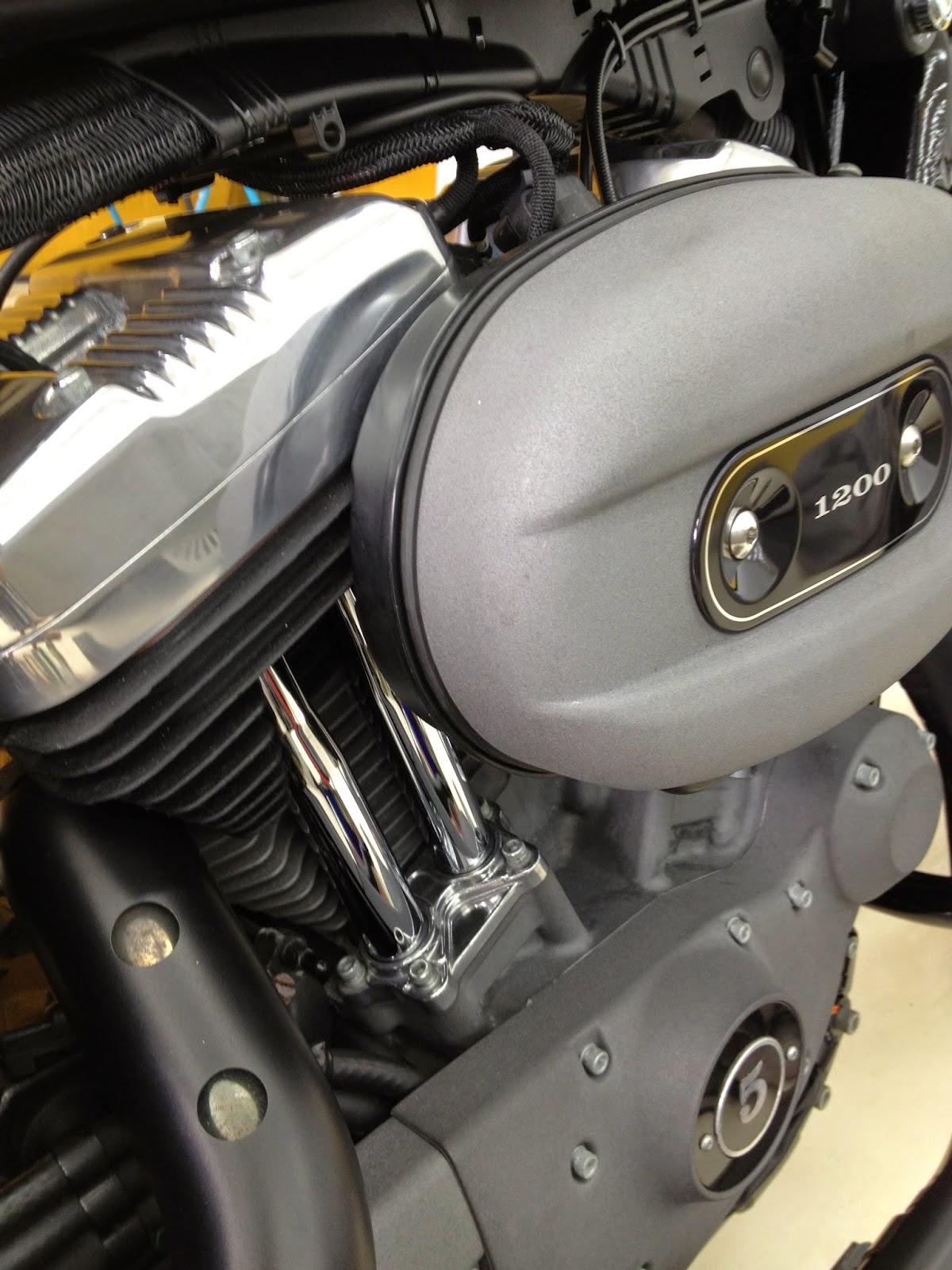UNSEALED/BARE ALUMINIUM
Unsealed/bare aluminium is a soft material and therefore easy to machine and can be polished to varying degrees of shine. However, it is prone to oxidation and therefore, all your elbow grease and time in polishing up a great shine on your unsealed aluminium trim will be gone in a few months when it starts to dull and blur again. When you polish it, your cloth becomes black. It requires consistent polishing to look at its best. Being a soft material, unsealed aluminium is also highly sensitive to scratches/abrasion/scuffs etc, marring its polished looks. Heard of the term "Brushed Aluminium" finish? That's aluminium that has been polished to a semi-satin look with lateral polishing lines visible. Unsealed aluminium is also widely used on Harley Davidsons and every American hotrod.
This BMW's old BBS rims sourced from the UK are "unsealed aluminium".
Polished by Pro Detailers to the owner's required level of gloss.
ANODIZED ALUMINIUM
To preserve the aesthetics of a piece of polished aluminium (mirror-finish, brushed look, satin look etc), it will be subjected to a process where the aluminium, in combination with a variety of chemicals and electricity, will produce a layer of extremely hard and transparent "anodized layer". Where your car's paintwork is protected by a layer of transparent and resilient clearcoat, the soft and sensitive aluminium is now protected by a layer of rock hard transparent anodization. This is Anodized Aluminium. It can be colourless (pic above) or coloured (red, black, blue being popular colours) as seen on your mountain bike's brake handles (example). When you rub any type of polish on it, there are no black marks on your cloth (unlike bare aluminium).
Pros:
1. The super-hard transparent layer protects the aluminium's intended finishing/looks without worries of oxidation that leads to dullness and the need for repolishing.
2. It protects from car washing scratches and daily wear and tear. Sounds great.
Cons:
1. Most materials that are very hard also tend to be brittle, and hence, prone to cracking.
As years go by, the anodized layer has been known to develop micro-cracks/fissures, and micro-pitting that are not visible in the initial stages. Later, you'll start seeing loads of scratches on these trims as though someone or some animal has been pawing crazily at it. These are not scratches. These are the fine cracks (pic below) that allow your car wash shampoo solution, rain water and moisture to seep through to UNDER this cracked anodized layer. That explains the commonly seen whitish fungus-like stuff on your trim that can never be totally "polished away".
2.Cost of replacing deteriorated anodized aluminium trims is very high. This is one of the major headaches while restoring an older vehicle.
WHAT'S THE EASIEST WAY TO RESUSCITATE DETERIORATED TRIMS?
As all metalworking websites will tell you, Anodized Aluminium is not polishable. They are referring to the aluminium underneath that's sealed by the anodized layer and hence, un-polishable.
However, the anodized layer can still be machine polished using abrasive compounds to remove any contaminants on TOP of this anodized layer. If the problem resides UNDER the layer, machine polishing is certainly useless.
WHAT DO I DO NEXT?
Technically, the correct method to gain access to that aluminium underneath is to chemically strip the anodized layer. Then you can start polishing the bare aluminium to your heart's content.
To strip via DIY style is hazardous as it involves extremely caustic chemicals, and requires removing the trim from the vehicle to avoiddamaging the paintwork. Sounds easy until you try it on your own car, and even worse on old classics where clips might not be easily available if any clips do break during removal of the trim.
Alternatively, there is a crude but workable method, albeit being highly labour intensive and tiring.
1. Mask the surrounding paintwork.
2. Sand the anodized aluminium trim by hand or by any type and size of sanding machine. Sand until every milimetre of anodization is gone. Laborious.
3. Machine polish the bare aluminium to your desired looks and seal it to reduce/prevent future dulling. Do not spray automotive clearcoat on it as it'll peel off in the future. There are many specialised products that can seal bare aluminium but its way beyond the scope of this article.
WHAT KIND OF RESULTS CAN YOU EXPECT ?
Using the crude method to avoid other issues and to minimise cost, you can expect something like this....an OEM look
EXAMPLE OF ANODIZED ALUMINIUM ON BIKES
Look at the whitish, hazy blurness of deteriorated Anodized Aluminium. Hand-polishing using your favourite Autosol or equivalent is virtually useless.
Look at the results after extensive work by Pro Detailers. The challenge is to avoid OVER-polishing in order to revert this piece to its OEM appearance.
Lovely results based on a practical and realistic technique. Truly an OEM look on this Harley sent to Pro Detailers from Osaka, Japan.








No comments:
Post a Comment